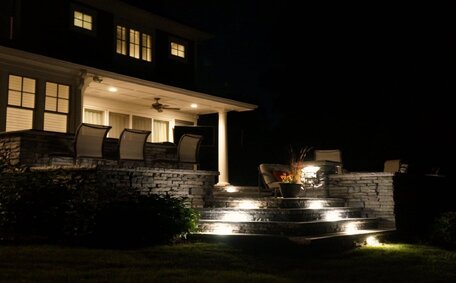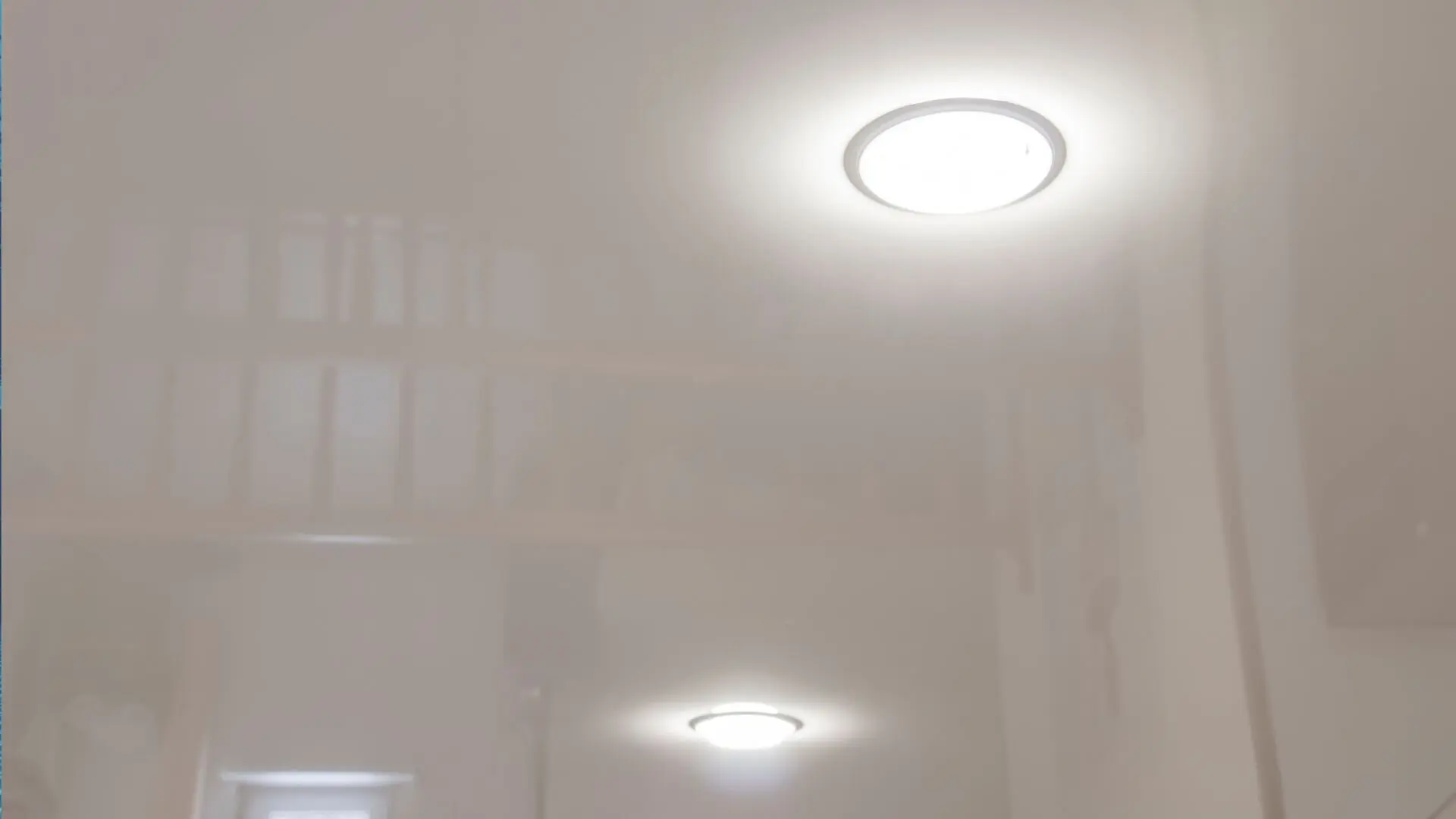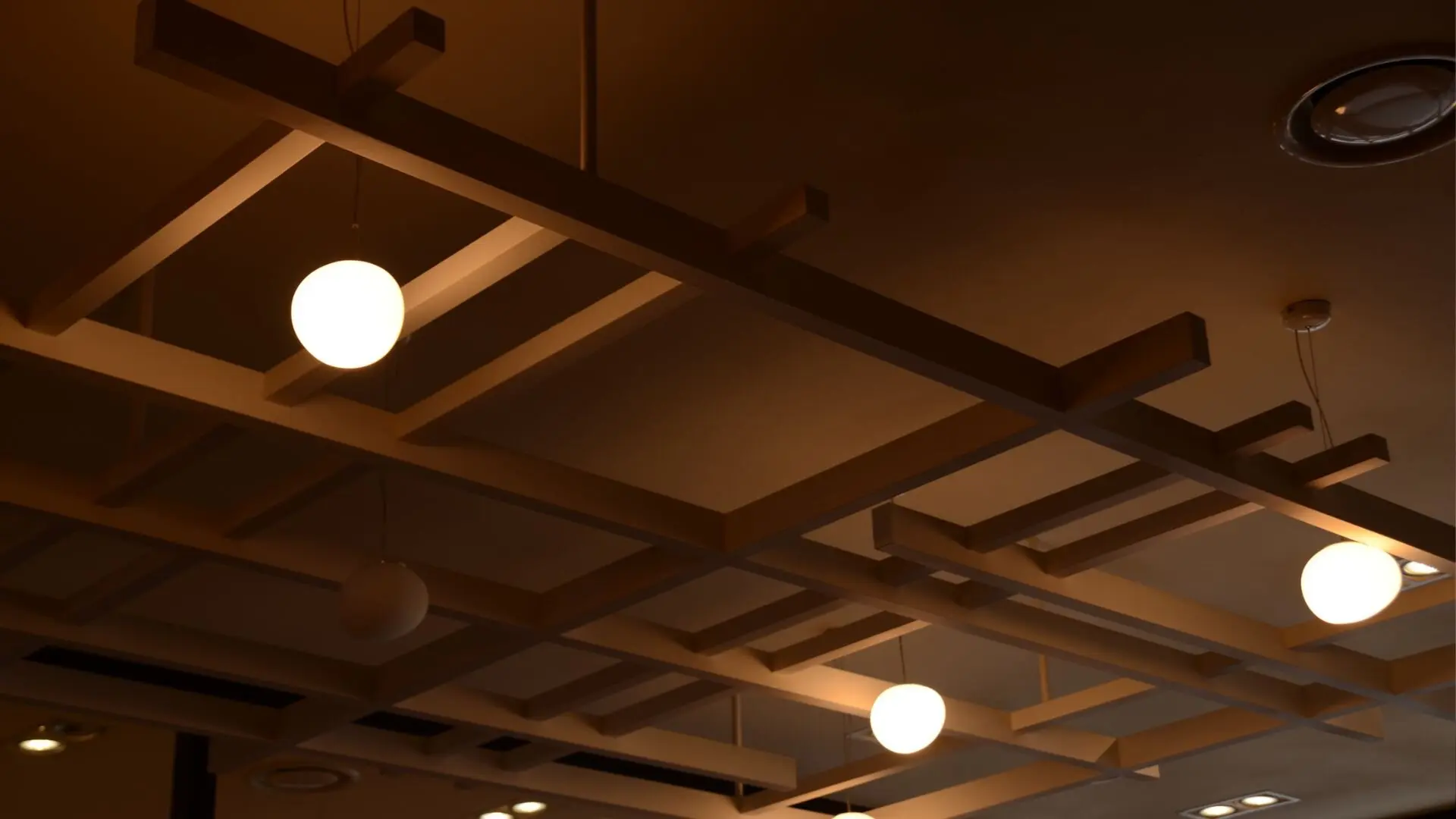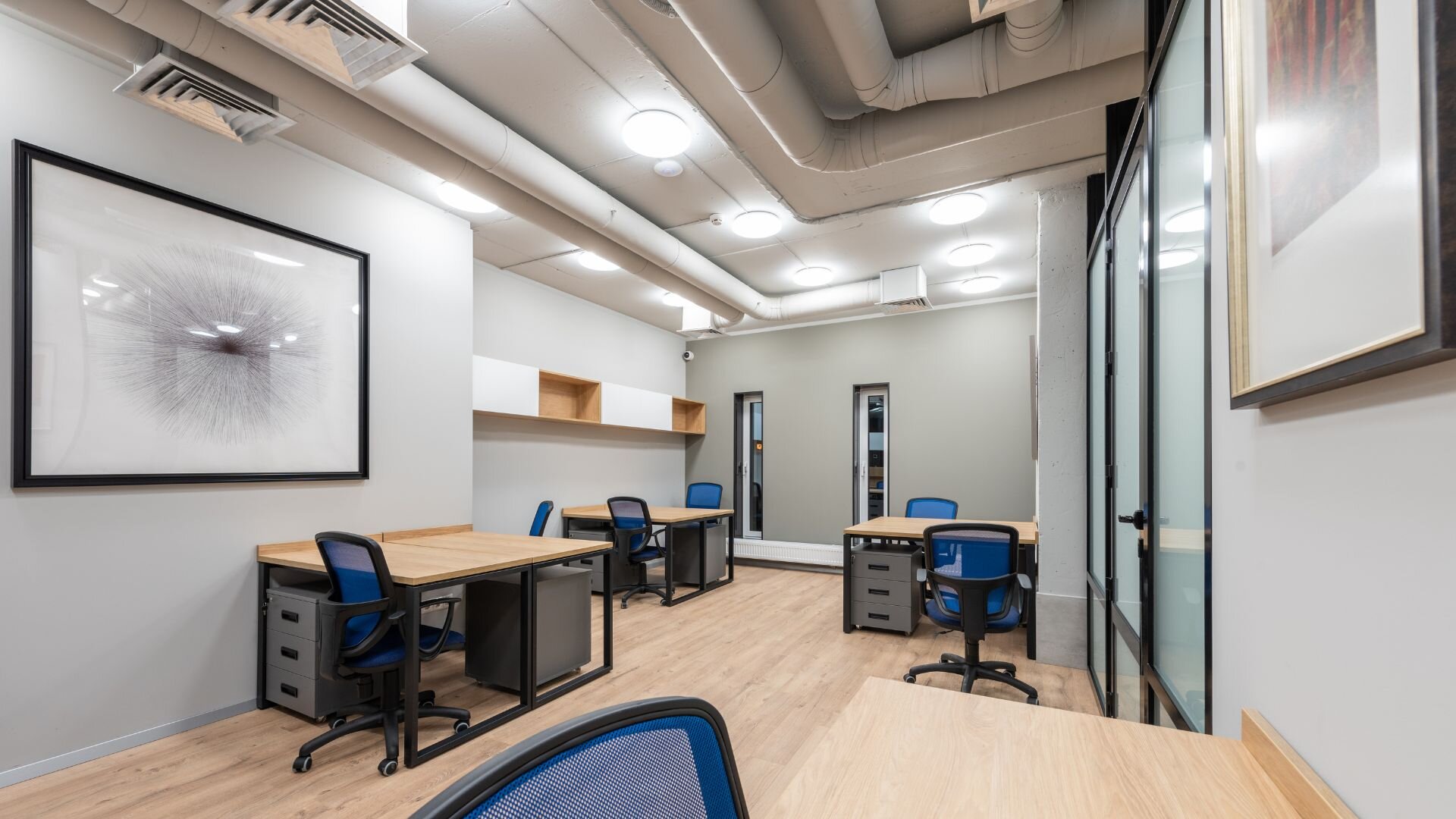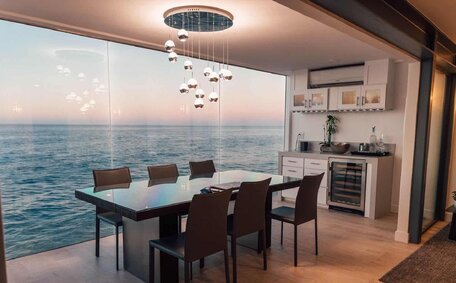Ever wish for a cozy, warmly lit living room? Say goodbye to harsh overhead glare and discover the charm of a well-thought-out lighting plan!
Designing a lighting plan is more than just placing fixtures. It involves thoughtfully creating a space that merges style with practicality. An effective lighting plan employs various "types of lighting" to reach the ideal result.
Picture the harmonious blend of multiple light layers working together:
- Ambient lighting: This is your general illumination, provided by recessed lights, pendant lights, or even chandeliers. It sets the overall brightness of the room.
- Task lighting: Think table lamps, floor lamps, or track lighting. These focus on specific areas for activities like reading or meal prep and are especially useful over kitchen islands.
- Accent lighting: This adds visual interest by highlighting architectural features or artwork. Wall sconces or recessed lights with adjustable beams can be used for this purpose.
Bid farewell to those inefficient incandescent bulbs. LEDs, your energy-saving mates, are perfect for cutting down electricity bills and lasting longer than traditional options. But, LEDs are only the beginning.
An inspired lighting scheme plays with different fixtures to create the right vibe. Whether it's table lamps for a cosy lounge or track lighting for focused kitchen tasks, you've got endless possibilities.
This guide will explore creating a lighting plan for your home. We'll explore different light sources, from lamps to recessed fixtures, and how to use them to create the perfect balance of light for your needs. With careful consideration, you can craft a space that's both beautiful and functional, transforming your home with the power of light.
A Guide to Lighting Your Home
Lighting is a key component in any room, greatly influencing its function, mood, and design. An effective lighting strategy considers more than just brightening a space; it thoughtfully addresses the unique needs of each area. You can achieve the best results when you layer different lighting types.
![2024 06 Led Light Design Led Light Design]()
Understanding Room Function
What you do in a room dictates its lighting needs. Living rooms, for instance, benefit from a combination of general lighting, such as recessed or pendant lights, that provide even brightness. Adding wall or track lighting to highlight reading spots can significantly enhance functionality.
Accent lighting, perhaps through strategically placed lamps or spotlights, can further enhance visual interest by highlighting artwork or architectural features. In contrast, kitchens demand bright task lighting over food preparation areas, typically achieved with pendant lights or under-cabinet lighting. However, softer ambient lighting, achieved through recessed lights or dimmer switches, can create a welcoming atmosphere for casual dining.
Existing Fixtures and Potential Upgrades
When creating a lighting plan for your home, consider existing light fittings and their compatibility with LED bulbs. LEDs offer significant energy savings and a longer lifespan, making them an excellent choice. If your current fixtures are not compatible, explore retrofitting options. This could involve replacing sockets or entire light fittings to accommodate LED technology.
Room Size and Layout
When it comes to light distribution and where to pop your fixtures, room size and layout are crucial. A spacious living room might need various light sources for balanced lighting. And when you're setting up lights, think about furniture placement and how people move around to prevent shadowy spots or awkward dark corners.
Natural Light and Shading Solutions
Using natural light well is key to creating bright and energy-efficient spaces. Your windows are vital for this. But sometimes, too much sunlight can be overwhelming. Blinds, curtains, or strategically placed plants can help keep the light level just right throughout the day.
Seeking Additional Expertise
For more complex spaces or those requiring a truly customised approach, consulting with a lighting designer or interior designer can be beneficial. They can help you create an effective lighting plan that considers all the above factors, including the use of indirect lighting for a softer overall illumination or motion sensors for added convenience and energy savings.
Choosing the Right LED Lights for Your Home
LED lighting opens up a world of possibilities for indoor design. But with so many options, choosing the right LEDs can feel daunting. To find the perfect lighting, get familiar with colour temperature, light output, beam angle, and dimming capabilities.
![2024 06 Led Unique Lighting Design Led Unique Lighting Design]()
Colour Temperature: Setting the Mood
Colour temperature, measured in Kelvins (K), refers to the light's appearance, ranging from warm white (around 2700K) to cool white (around 4000K) to daylight (around 5000K and above). Warm white casts a soft, yellowish glow, creating a cosy and inviting atmosphere ideal for living rooms and bedrooms where relaxation is desired. Cool white provides a more energising, crisp light, perfect for kitchens, bathrooms, and home offices where concentration is needed. Daylight offers the closest replication of natural light, ideal for studios or areas where colour accuracy is important.
Light Output (Lumens): Illuminating Your Needs
Lumens measure the brightness of light. When choosing LED lights, consider the room's function and the brightness required for various activities. A well-lit kitchen counter where you chop vegetables needs a higher lumen output compared to a hallway where softer lighting is sufficient. As a general rule, the following table provides a starting point for lumens based on room function:
Room Function | Lumens per Square Metre |
Living Room (ambient) | 100-200 |
Kitchen (task lighting) | 300-400 |
Bathroom (general lighting) | 200-250 |
Reading Area | 300-500 |
Beam Angle: Directing the Light
The beam angle refers to the spread of light from the fixture. Wide beam angles (around 60 degrees or more) are suitable for general lighting, evenly illuminating a large area. Narrow beam angles (around 30 degrees or less) are ideal for task lighting, focusing light on a specific area like a kitchen island or a workbench. Spotlights (less than 20 degrees) create dramatic accent lighting, highlighting architectural features or artwork.
Dimming Capabilities: Creating Ambience
Dimmable LED lights offer the ultimate flexibility in creating mood lighting. You can adjust the brightness with dimmers and compatible LED bulbs to suit the occasion. Dimming down the lights in the living room creates a cosy atmosphere for movie nights, while brighter settings can be ideal for entertaining guests. It's important to choose dimmers specifically designed for LED bulbs to ensure proper functionality and avoid flickering.
Layering Your Lighting with LEDs
Crafting a welcoming and well-lit space hinges on layering various lighting types. This approach covers your general needs while letting you shape the atmosphere and showcase specific features.
Setting the Stage: Ambient Lighting
Ambient lighting is the backbone of any good lighting scheme, offering a comfortable level of general illumination across the room. LED downlights, ceiling lights, or pendant lights work brilliantly as permanent fixtures for this.
When choosing these, consider the size of the space, the amount of natural light available, and the desired mood. Dimmers on light switches allow you to adjust the brightness to suit the occasion, whether you need a bright light for cleaning or a softer ambience for relaxing.
Task Lighting: Spotlight on Activity
Next comes task lighting, which provides focused illumination for specific activities. This could be under-cabinet lights in your kitchen, a desk lamp for reading, or track lighting aimed at your workbench. Task lighting ensures you have a reliable source of light exactly where you need it, reducing eye strain and fatigue.
Accentuating Your Space: The Art of Accent Lighting
Finally, accent lighting adds another dimension. Used strategically, it can highlight architectural features like a beautiful brick wall or a decorative archway. It can also be used to draw attention to artwork, furniture, or even a stunning plant. Recessed lights, spotlights, or strategically placed LED strips can all be employed to achieve this.
Planning for Success
A well-thought-out lighting plan is crucial for success. Consider your floor layout, the activities planned for each area, and the ambience you want to set. Also, be mindful of reflective surfaces, as light bouncing off gloss finishes can lead to glare.
Putting it all Together To Create a Lighting Plan
![2024 06 Led Office Design Led Office Design]()
A well-designed lighting plan considers all these elements ? colour temperature, lumens, beam angle, and dimming capabilities. When crafting your lighting plan, consider the following:
- Space and Layout: Take into account the room?s size, ceiling height, and furniture arrangement. Sketch out a simple floor plan to identify where lighting fixtures will be most effective.
- Lighting Needs: Identify areas that require brighter task lighting, such as kitchen benches or study desks, and areas suited for softer ambient lighting, like hallways or living areas. Think about specific lighting needs you might have, like highlighting a cherished piece of artwork.
- Types of Lighting: Combine different types of lighting fixtures to achieve a layered effect. Consider a mix of ceiling lights for general illumination, wall lights to create ambience, and track lighting to direct light exactly where you need it.
- Fixtures and Functionality: Choose lighting fixtures that complement your existing décor and consider features like dimmers or smart lighting capabilities. This allows you to adjust the mood and functionality of your space throughout the day.
Carefully weighing these factors allows you to create a lighting arrangement that suits your needs and sets the ideal mood in every part of your home. Reliable sources, such as professional lighting designers, can provide expert guidance tailored to your space. They'll assist with choosing the right fixtures, planning their placement, and ensuring your home is lit both beautifully and practically.
Brighten Your Space with LEDs
Creating a standout LED lighting plan starts with understanding the unique lighting requirements of each space. A strong layout considers how each area will be used and the atmosphere you want to create. Thoughtfully choosing the placement and type of LED fixtures ensures your home is lit just right while improving energy efficiency at the same time.
Contact Bright Force Electrical today for expert advice and assistance with your LED lighting project. We offer a comprehensive range of LED lighting services, including consultations, fixture selection, and installation. Let us help you illuminate your space!
